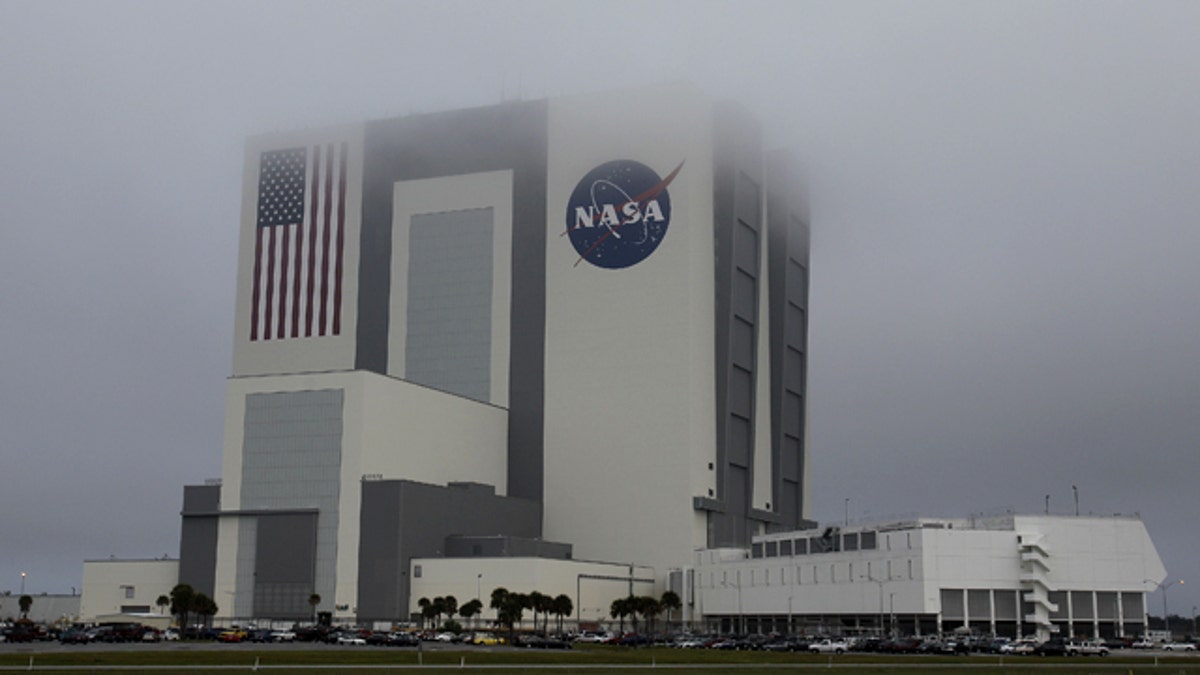
(AP Photo/Chris O'Meara)
CAPE CANAVERAL, Florida -- Bad weather delayed Discovery's homecoming Tuesday for the second day in a row, and Mission Control made one last attempt to end the 15-day space station delivery mission in Florida before ordering a detour to California.
NASA said it intended to bring Discovery and its seven astronauts back to Earth on Tuesday, if not at Kennedy Space Center then at the backup landing site in Southern California.
Rain developed just before daybreak, and forecasters feared fog might obscure the landing strip. The flight director waited until practically the last minute before calling off the morning's first landing attempt.
As the sun rose, there was cautious optimism the sky would clear.
As a result, flight director Bryan Lunney decided to try for the second Florida landing opportunity at 9:08 a.m. and, if the weather still had not improved, aim for Edwards Air Force Base on the following orbit, at 10:35 a.m. EDT.
On Monday, rain and overcast skies at Kennedy prevented Discovery from ending its next-to-last flight, a resupply mission to the International Space Station that spanned more than 6 million miles.
Hoping for the best, Mission Control once again described to the astronauts the unusual flight path they would be taking to Cape Canaveral, cutting across America's heartland.
This time, Discovery would take a more westerly approach, bringing the shuttle over Vancouver, British Columbia, and down over Helena, Mont., Wyoming, southwestern Nebraska, northeastern Colorado, southwestern Kansas, Oklahoma, Arkansas, Mississippi, Alabama, Georgia and Florida just east of Gainesville.
It would be the first time since 2007 that a space shuttle has descended over so much of the United States.
"Sounds like a great ground track," said Discovery's commander, Alan Poindexter.
A landing at Edwards Air Force Base, meanwhile, would have Discovery flying over San Francisco, then Modesto and Merced, and just east of Fresno.
Either way, it was going to be a rare visual treat for early morning risers along Discovery's North American flight path.
NASA typically prefers bringing a shuttle home from the southwest. That way, there's minimal flying over heavily populated areas.
In 2003, space shuttle Columbia shattered over Texas during re-entry, but no one on the ground was injured by the falling wreckage.
NASA also prefers to end a shuttle flight at its home base in Florida, to save the $1.8 million and minimum of a week it takes to haul a shuttle cross-country atop a modified jumbo jet.
Before leaving the space station Saturday, Poindexter and his crew dropped off tons of supplies and equipment. The main delivery was a tank full of ammonia coolant, which took three spacewalks to hook up.
A nitrogen pressure valve refused to open after the tank was installed, and for a day, NASA considered sending the shuttle astronauts out on a fourth spacewalk to fix the problem. But engineers concluded it was not an emergency and that the space station crew or future shuttle fliers could deal with it.
History, meanwhile, was made with the presence of four women in space: three on the shuttle and one at the station.
Only three shuttle missions remain for NASA before the fleet is retired this fall after nearly 30 years of operation. Atlantis will carry up a small Russian lab and other equipment next month.
The same bad weather that prevented Discovery from returning home Monday also stalled Atlantis' trip to the launch pad. The three-mile move from the hangar has been rescheduled for Tuesday night. Liftoff is targeted for May 14.
